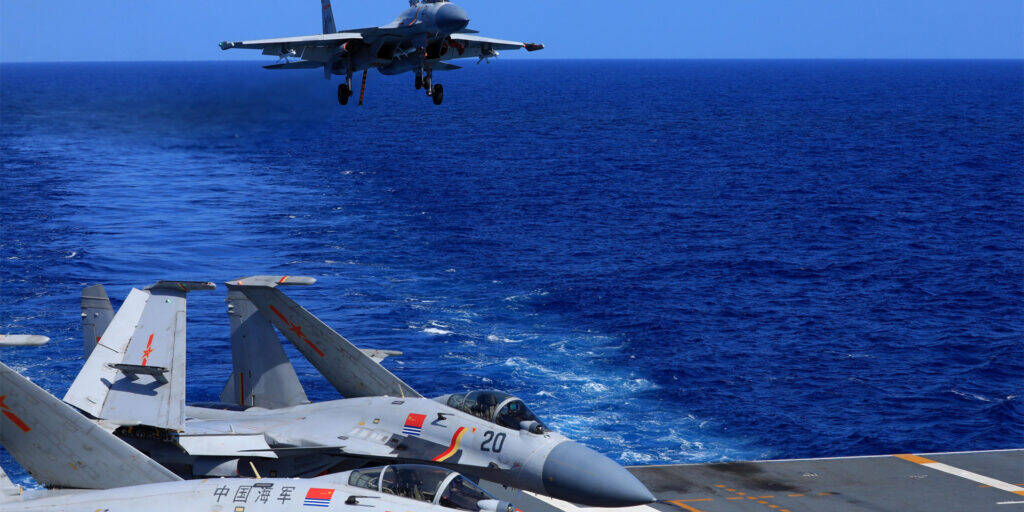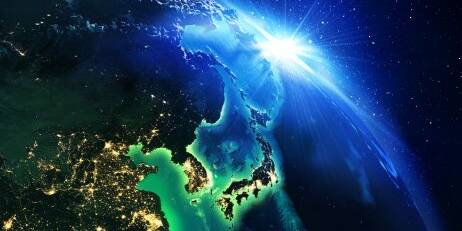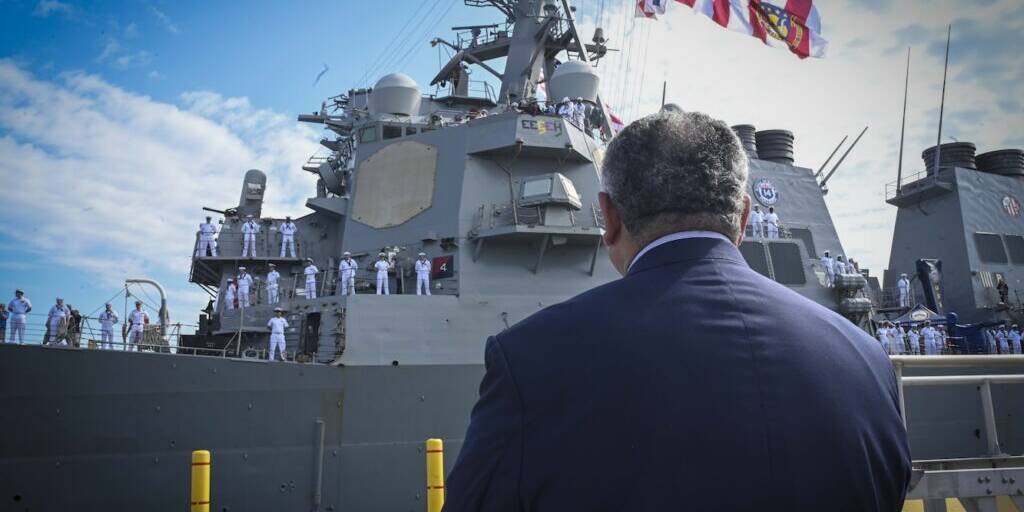Jeffrey Ordaniel, for Pacific Forum
“It is very clear to me in my vision for the way that the country will move forward that I cannot see the Philippines in the future without having the United States as a partner.” – President Ferdinand Marcos, Jr., September 20, 2022
“I want to be very clear. The United States defense commitment to the Philippines is ironclad.” – President Joseph Biden, Jr., October 25, 2023
The U.S.- Philippine Alliance has advanced significantly over the past two years. The period of transition, from Duterte to Marcos, and the renewed American commitment to the Indo-Pacific under Joe Biden were key determinants. Institutionalizing this progress in ways that allow the alliance to better withstand political changes, both in Washington and Manila, and to better deal with emerging regional security challenges is imperative.
Security Cooperation
Most notable in the rapidly improving bilateral relations is closer security cooperation. Soon after taking office in June 2022, President Marcos quickly reinvigorated the Philippines’ long-standing alliance with the United States. The Enhanced Defense Cooperation Agreement (EDCA), which saw very little progress during the Duterte Administration, became relevant again with both sides deciding to fast-track infrastructure development in the five Philippine bases identified initially in March 2016 as open to American use. In February 2023, both governments agreed to add four more EDCA sites to ensure greater interoperability and faster response in cases of contingency. The additional EDCA sites – three facing Taiwan located in Cagayan and Isabela provinces, and one close to the South China Sea in southern Palawan – are seen by many Filipino and U.S. experts as valuable during peacetime and contingencies. At peacetime, the sites provide ideal environments for joint and combined training. Meanwhile, they are also consequential during contingencies as those bases are close to potential conflict areas, enabling a quicker and more effective response.
But the two allies are not waiting for the EDCA sites to be ready before commencing more advanced training. In 2023, they conducted their largest-ever Balikatan exercises, with over 17,000 U.S. and Philippine service members training together. The number is notable, given that past iterations only had around 8,000 participants. In addition to the usual focus on Humanitarian Assistance and Disaster Relief (HADR), the 2023 iteration included a bilateral command post exercise to strengthen their “ability to plan, coordinate, and provide command and control of forces together… in a shared and contested battlespace.” There were also combined live-fire exercises, training on intelligence sharing and logistics, and simulations on amphibious landing operations and offshore territorial defense. In November 2023, the Philippine Navy and Airforce joined their U.S. counterparts for a series of joint air and naval patrols in parts of the South China Sea and the Luzon Straits, an alliance operation unimaginable just a few years back.
Moreover, to deepen the institutionalization of their alliance, Manila and Washington issued their very first Bilateral Defense Guidelines in May 2023, which served as a “guide for priority areas of defense cooperation to address both conventional and non-conventional security challenges of shared concern to the United States and the Philippines.” This was a key recommendation from the Track 2 U.S.-Japan-Philippines Trilateral Maritime Security Dialogue convened by the Pacific Forum in December 2022. The United States and Japan have their own Bilateral Defense Guidelines. In addition to enhancing bilateral planning, information-sharing, and deepening interoperability, which they have started to accelerate through more sophisticated training exercises, the Bilateral Defense Guidelines also expressed commitment to pour more resources to modernize the AFP’s capabilities. They plan to do this by expeditiously adopting a 5-10-year Security Sector Assistance Roadmap, focusing on “priority defense platforms” and capacity-building “to enhance the Philippines’ multi-domain deterrence.” Acquisition priorities include a fleet of multi-role fighter aircraft for the Philippine Air Force and more capable vessels for the Philippine Navy through U.S. mechanisms such as the Foreign Military Financing, the Maritime Security Initiative, and the Excess Defense Articles Program.
Furthermore, the Guidelines envisions the alliance to contribute more to global and regional peace and security through trilateral and multilateral cooperation with like-minded partners, especially with other U.S. allies. This started manifesting in August 2023 when the naval forces from the United States, Australia, Japan, and the Philippines conducted a joint exercise near Manila Bay. Manila has an existing Status of Visiting Forces Agreement with Canberra, and is currently negotiating a Reciprocal Access Agreement (RAA) with Tokyo.
High-Level Visits and Political Engagements
Since the start of the Marcos Administration, the security relationship has been advanced by several high-level visits of senior officials to each other’s capitals. Secretary of Defense Lloyd Austin, Secretary of State Antony Blinken, and Vice-President Kamala Harris visited Manila during the first year of the Marcos Administration. To date, President Marcos has visited the United States thrice in September 2022, May 2023, and November 2023, with his Foreign Affairs and National Defense Secretaries making separate visits to meet with their U.S. counterparts. Marcos’ U.S. visit and meeting with Biden in September 2022 was a first for a Filipino head of state, since Benigno Aquino III met with Barack Obama in Sunnylands, California, in February 2016.
In April 2023, after a seven-year hiatus, a two-plus-two meeting was held between the U.S. Secretaries of State and Defense and their Philippine counterparts. No two-plus-two meeting was held during the six years of the Duterte Administration.
Economic Engagements
While robust, the economic relations between the United States and the Philippines have significant room for growth. The Philippines’ neighbor, Vietnam, has bigger trade and investment ties with the United States. Manila and Washington recognize the big disconnect. On the one hand, U.S. security and political relations with the Philippines are arguably the strongest in Southeast Asia, underpinned by a 72-year-old Mutual Defense Treaty. On the other hand, economic ties are less than ideal, with bilateral goods and services trade totaling only $36.1 billion in 2022 (vice $142.1 billion worth of U.S. trade with Vietnam, $78.3 billion with Malaysia, and $79.1 billion with Thailand). To boost bilateral economic ties and the Philippines’ quest for a higher economic growth trajectory, President Biden will dispatch a Presidential Trade and Investment Mission to the Philippines in March 2024 to encourage U.S. companies’ investments. Moreover, the U.S. Agency for International Development (USAID) is launching a program to assist in infrastructure development and support the construction of railways, ports, and transport systems throughout the Philippines. In 2023, the United States Trade and Development Agency (USTDA) launched activities to leverage “over $3 billion in public and private financing to strengthen the Philippines’ critical mineral supply chains, advance smart grid technologies and clean energy solutions, promote secure 5G deployment, and strengthen airport security,” among others. The Marcos Administration will have to reciprocate and implement reforms to improve the ease of doing business, introduce competitive tax incentives, and strengthen institutions for significant U.S. and other foreign investments to materialize.
Since the Philippines has some of the most expensive electricity costs in Southeast Asia, deterring foreign direct investments, and given the looming energy issues associated with the Malampaya Gas Field in the South China Sea running dry by 2027, the United States has responded favorably to renewed Philippine interest in nuclear power. In November 2024, Manila and Washington signed an “Agreement for Cooperation Concerning Peaceful Uses of Nuclear Energy,” also known as a Section 123 Agreement. The deal serves as a legal framework for U.S. energy companies to cooperate with the Philippines in the construction of nuclear power plants.
Long-term cooperation with the United States on critical technologies, renewable and nuclear energy, infrastructure development, and private sector investments are expected to boost the Philippines’ economic competitiveness and result in bilateral economic ties that match the two countries’ close security relations.
Playing Catch Up
During the final year of the Duterte Administration, the defense and foreign policy establishments in Manila had already lost interest in accommodating China’s policy preferences. After all, President Duterte, in good faith, pursued a foreign policy that expected Beijing’s goodwill. Duterte, for some time, disregarded the 2016 Arbitral Award that invalidated China’s sweeping nine-dash line claim, appeared to have no interest in deepening security relations with China’s rival, the United States, and downplayed some of China’s coercive maneuvers in what Manila calls the West Philippine Sea, part of the South China Sea that lie inside the Philippines’ exclusive economic zone (EEZ). The Duterte Administration, however, found value in the Philippine Coast Guard’s non-military nature and saw it as a valuable institution to keep maritime security engagements with the United States active and maintain presence in the South China Sea, both without provoking China. In other words, Duterte’s approach encouraged China to show a willingness to compromise, operationalized Beijing’s frequent references to ‘meeting China halfway’ and ‘joint development in disputed waters,’ and allowed Chinese officials to push for maritime policies that adhere to international law without ‘losing face.’ But Beijing did not return the favor.
U.S.-Philippines cooperation from mid-2016 until Marcos’ election was capped by Duterte’s parochial concerns and positions that accommodated many of China’s policy preferences. When Marcos, Jr. was elected in 2022, the Philippines changed tack. Marcos does not share Duterte’s foreign policy positions. While he kept engagement with China on the table, particularly on the economic front, the new administration wants to ensure a more responsive security strategy. The change of leadership in Manila provided Washington with an opportunity to move quickly to deepen security cooperation and modernize the relationship to keep up with the rapidly changing geopolitical and security landscape. Hence, the significant developments in U.S.-Philippines bilateral relations over the past two years.
Meanwhile, the defense establishment in the Philippines is keenly aware of how conflicts in Ukraine and the Middle East could stretch U.S. resources and attention. The Marcos Administration wants to ensure the South China Sea remains a priority for Washington, and that the alliance gets back on track. Ultimately, the Philippines wants an effective response to China’s increasingly assertive operations in the South China Sea and an alternative path to economic growth that is less reliant on Beijing. A stronger alliance with the United States increases deterrence, builds Philippine military capabilities, allows for closer coordination to better respond to gray zone coercion, including economic pressure, and provides investment and development opportunities.
This is an excerpt of Introduction Chapter of the Issues & Insights volume, “Anchoring the U.S.-Philippine Alliance,” published by Pacific Forum.
Author:
Dr. Jeffrey Ordaniel is is non-resident Adjunct Fellow and Director for Maritime Security at the Pacific Forum. Concurrently, he is also Assistant Professor of International Security Studies at Tokyo International University (TIU) in Japan. He holds a Ph.D. in International Relations and specializes in the study of offshore territorial and maritime entitlement disputes in Asia.
Feature Image: President Joe Biden and First Lady Jill Biden greet President Ferdinand Marcos Jr. of the Republic of the Philippines and first lady Mrs. Louise Araneta-Marcos, Monday, May 1, 2023, at the South Portico of the White House. / via Official White House Photo by Cameron Smith / Public Domain


